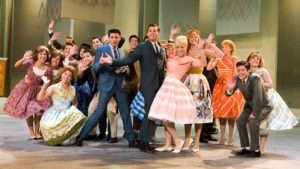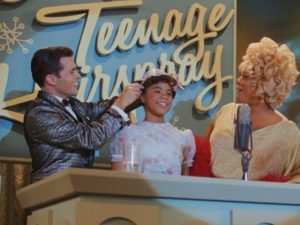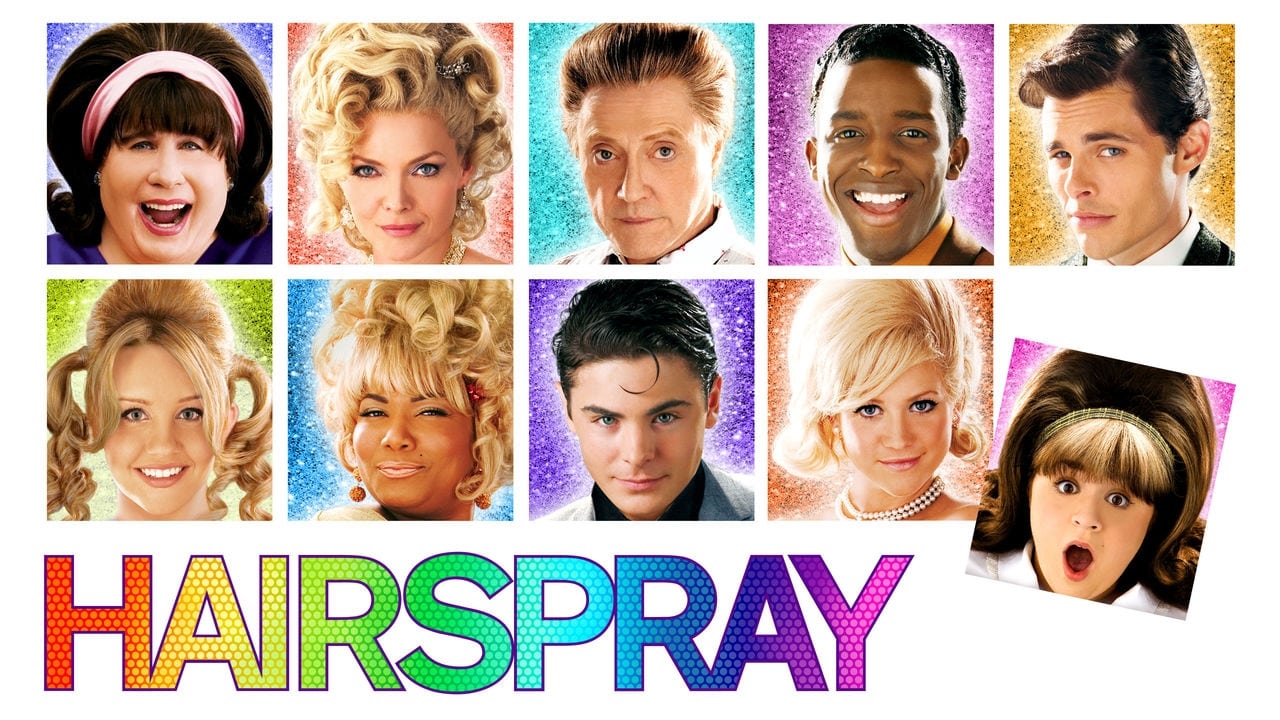The multifaceted musical represents America in the 1960s and the battle against bigotry in media as an ensemble cast portrays how to fight for the limelight.
The 2007 film Hairspray gives viewers a good glimpse of America during the 1960s, a time period in which racial segregation was practiced almost everywhere in the country. Jim Crow laws were tragically implemented in the Southern United States, mandating that black people and white people must be kept apart. In addition, the time period was also significant for other social and political movements, driving civil rights advocates to fight for equality for all ethnic groups. The Corny Collins Show that Tracy and Penny watch together after school is a symbol of the growing popular culture and political trends that evolved in America during that decade.
Hairspray takes place in Baltimore, Maryland, 1962, as evidenced by old-fashioned cars parked on the streets and tall apartment buildings and businesses positioned close to each other. Many women who played the characters in the film and who are stars on The Corny Collins Show have elegant hairstyles that capture the fashion of the 1960s. Tracy’s hairstyle is short with big flips at the end, a relatable look to viewers as it’s still popular today. In general, the colorful aesthetics and many of the vibrant characters help keep Hairspray fun without seeming “dated.”
The Corny Collins Show

The Corny Collins Show represents the growth and popularity of DJs, dance, music, film, and television. The show is broadcast on TV in black-and-white, lacking color. Teenagers who lived in the 1960s like Tracy and Penny often spent hours watching these programs and copying dance moves to embrace the rise of popular culture. Tracy’s dream of being on the show resembles the normal adolescent’s dreams of becoming famous and known by everyone.
Becoming recognizable overnight seemed possible during this decade because of new artists entering the scene like Bob Dylan and The Beatles, along with the events that captured national attention, like the U.S. Civil Rights Movement and the assassination of U.S. president John F. Kennedy. Almost any event or person seemed primed for massive coverage, and rising to stardom was a mixture of luck and timing.
If viewers can look closely on The Corny Collins Show, during “N—- Day” there is a divider that separates the blacks from the whites; also, “N—- Day” is only held on the show once a month. These conditions represent how black people were treated unfairly and were forced into situations where white people viewed them as having low status, underscoring the casual but damaging racism of the 1960s.
The Protest
When Velma, the antagonist, cancels “N—- Day”, Tracy, who is one of the few white characters that supports the black people’s rights, suggests they form a march in protest. The march mirrors acts of resistance in the U.S. Civil Rights Movement, where the black people come together as a unified force, holding up picket signs demanding an end to segregation. Many of the police officers who form a blockade against the protesters are white. The police officers who tried to stop the integration movement in Hairspray also symbolize the police officers who placed black people under arrest for protests in the 1960s. When Tracy is accused of assaulting a police officer, this symbolizes the protectors of white supremacy having power over both black people and any any allies supporting the protests.
Tracy risks her privilege of being on The Corny Collins Show so she can join the protests and fight for a better future. The song “I Know Where I’ve Been”, sung by Queen Latifah, gives viewers a look at past struggles and future resolutions. As Queen Latifah sings, those in her black community march with picket signs as Tracy walks alongside them.
The march that Tracy participates with the black people serves to represent multiple protests and boycotts black Americans participated in to fight for racial equality.
Racist Characters
Velma is an effective antagonist because she is a white woman who opposes the civil rights of black people and supports the racism of her era. Her white skin, blonde hair and blue eyes all showcase the white privilege and standards of beauty that she possesses. She is also the mother of Amber, one of Tracy’s classmates from her high school. What makes her a true villain is her racist and sizeist personality; she cancels “N—- Day” on The Corny Collins Show just to keep the whites in the spotlight. Velma is an archetype representing the whites’ support of racial segregation because in the 1960s; many whites who enjoyed more success, privilege, and rights than blacks wanted to closely guard all they had. By keeping The Corny Collins Show segregated, Velma unfairly preserves the racist status quo.
Penny’s mother, Prudy, is also a highly racist character. She tries to control Penny in all aspects of Penny’s life, including forbidding her to interact with black people and demanding she only socialize with whites. Prudy goes to many extremes to keep Penny from expanding her horizons and learning from others. In one shocking scene, she literally ties Penny to her bed. However, with the help of friends, Penny is able to escape her racist mother’s grasp and appear on The Corny Collins Show, going on to befriend people other than just whites.
Hairspray Adaptations

The 2007 version of Hairspray is based off of the original 1998 film and the 2002 Broadway musical. While the 1988 Hairspray film had become a cult classic, the 2007 film is based off of the 2002 musical. Many viewers in America as well as other countries praised the 2007 Hairspray movie because of its 1960s-style dance music and rhythm and blues. Beyond even that, the movie provided viewers in present-day America an expansive picture of racism back in the 1960s. The 2007 movie presented a lot of historical lessons in terms of the political views and entertainment of America decades ago. In addition, the film has strong African-American representation; Inez Stubbs and Seaweed J. Stubbs are key characters seen on TV in The Corny Collins Show, centering black performers in the entertainment world. Racism in the 1960s is a trending topic that people even today are discussing, and these characters help to understand the challenge of pursuing show business as black entertainers.
The legacy of Hairspray continues with its 2016 adaptation, a television special titled Hairspray Live! that aired on the NBC television network. Viewers can continue to reflect on the themes of racism in the 1960s; Hairspray Live! includes African American cast members who play members of the Stubbs family, key players in the Hairspray franchise. Other central elements of Hairspray include the cast members using actual hairspray to keep their hairdos in place and wearing eye-catching suits and dresses, adding another dash of 1960s authenticity. By diving into the Hairspray world, viewers can deeply engage with the troubles of segregation and identify racist policies today.

Comments